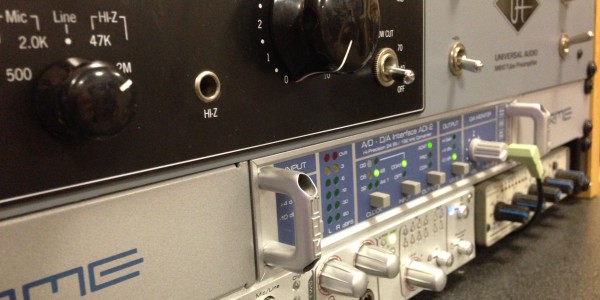In light of our debut EP Release available 11/17/2015, the upcoming CD from our band Shots In Order was all recorded, mixed, and mastered by us. With that being said, we would love to share with you some helpful tips on how to get started recording, mixing, and mastering a CD yourself with basic music gear.
So lets start with a very simple introduction into the world of home studio audio engineering. For those experienced users, this article will serve to you as a memory of when you first got started too.
For starters, you will need just 4 pieces of music gear to get started.
[bullet_block style=”size-16″ small_icon=”1.png” width=”” alignment=”center”]
- Desktop/Laptop Computer
- DAW(Digital Audio Workstation) Software
- An Audio Interface or Digital Mixer
- Nearfield Monitors and/or Headphones
[/bullet_block]
[feature_box style=”16″ title=”THATS IT! NOW PRACTICE.” alignment=”center”]
Mixing and mastering takes time and experience. So you will need to learn the techniques, but most importantly, practice mixing and mastering to gain experience.
[/feature_box]
MUSIC GEAR
Lets start with a little more information about the music gear.
[bullet_block large_icon=”39.png” width=”” alignment=”center”]
-
LAPTOP/DESKTOP COMPUTER
[/bullet_block]
First of all, you are going to need a laptop or desktop computer for starters. It can be an apple macintosh computer or a windows based PC. Most people prefer the latter for audio engineering. Personally, I am still using a PC. The type of computer you choose has no effect on the audio quality what so ever.
However, the computer that you choose should be powerful enough to handle your operating system and digital audio workstation software(DAW). So keep in mind the specs for your computer, the operating system, and DAW of your choice.
[bullet_block large_icon=”40.png” width=”” alignment=”center”]
-
DAW(Digital Audio Workstation) SOFTWARE
[/bullet_block]
Secondly, you are going to need a Digital Audio Workstation software. There are many DAWS on the market today. I used to use Cakewalk Sonar, and then made the switch to Pro Tools. I use Pro Tools on my windows based PC and I recommend it to you. Pro Tools is also the industry standard.
[bullet_block large_icon=”41.png” width=”” alignment=”center”]
-
AUDIO INTERFACE
[/bullet_block]
An Audio Interface is next on the list. Some audio interfaces are small sized box shaped pieces of equipment that sit in a desk. Some are larger rackmountable equipment, and some are larger digital mixers with lots of buttons and faders! They connect to your computer via usb, firewire, or ethernet ports to your computer.
The audio interface becomes the soundcard for the computer. They will most likely have a variety of XLR and ¼ inch input and output jacks, and usually a monitor volume knob at the very least. I would also recommend that you get one that has 48v phantom power switch or a button to power a condenser microphone.
Consider getting an interface that has digital inputs and outputs, such as adat and spdif. You don’t really need this for starters, but at some point you may want to upgrade.
[bullet_block large_icon=”42.png” width=”” alignment=”center”]
-
NEARFIELD MONITOR SPEAKERS
[/bullet_block]
In addition to your audio interface, a pair of nearfield studio monitors are next. These are speakers designed to have a flat frequency response curve ideal for engineers in the mixing position.
Near field monitors come in active and passive designs. The active speakers have their own power source built in and are plugged into an AC power source. The passive speakers rely on another separate piece of equipment called the power amp. The speakers connect to the power amp, and the power amp supplies the power drawing from the AC power source.
[bullet_block large_icon=”43.png” width=”” alignment=”center”]
-
HEADPHONES
[/bullet_block]
Finally, a good pair of pro audio headphones should be in every studio. Mixing on headphones is another option, but don’t rely on just the headphones. Listening through different speakers and headphones is a practice all mixing engineers do.
Surprisingly, some mixing engineers will use the apple earbuds as another headphone option.
[bullet_block large_icon=”44.png” width=”” alignment=”center”]
-
MICROPHONES AND PREAMPS
[/bullet_block]
Although you do not need microphones and preamps to mix, I figured I would list it here anyway. There will probably come a time that you want to record audio, and you will need a microphone to record acoustic audio. Otherwise, you can still record guitars and keyboards direct and use plugins to craft their sound. Preamps are built into audio interfaces, so out of the box you will be good for starters. A standalone microphone preamp will offer you better sonic quality. Consider upgrading down the road.
Sweetwater is a great site where I like to shop for music gear.
